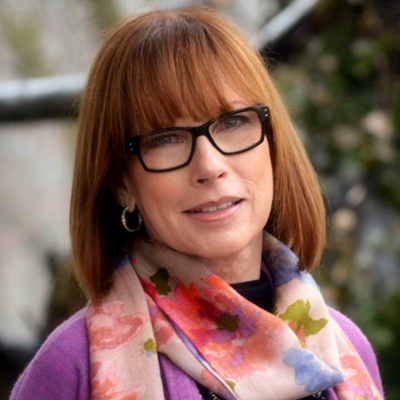Keep Moving Forward: Marilyn’s Story
He had just retired. And at 66, the former executive vice president of Manischewitz, Franklin Claire, and his wife Marilyn were doing everything they had dreamed about doing: he was teaching at Muhlenberg College, mentoring students, traveling, and working out. This was a man who saw his doctors regularly and paid attention to his body. He felt good and fit.
Except for the pain in his hip, a gnawing pain that drove him to his orthopedist.
Despite treatment, the pain not only lingered, but, after a year, seemed to migrate toward his back, near his kidneys. Now he saw his urologist, who scanned his liver. When the results came back, Franklin Claire learned that his liver was totally filled with tumors.
“I was shocked into silence,” says his wife, Marilyn, adjusting the black frames of her glasses. “Silence. If you can imagine me being silent.”
And now the urologist directed her husband to an oncologist, who told Franklin that he had just three to six months to live. He had Stage 4 lung cancer, and the pain in his hip was metastatic lung cancer. This was a man who did not smoke cigarettes, a man who watched his health carefully.
Marilyn fiddles with a button on her turquoise cardigan. “After Franklin began treatment, I said we should see the Cancer Support Community. One of my friends told us about it.
“We were so frightened about the whole cancer experience that we were looking for outlets. Where could we go where the two of us could be part of the group, and the group would understand what we were talking about? Even though he held a BA and an MA in psychology, I felt he needed to be with others who were experiencing what he was experiencing.”
Marilyn’s reddish hair gleams in the sunlight. “Franklin went to a private psychologist who said that he and I needed to have an end-of-life talk. I didn’t like that. I wanted us to meet survivors.”
So he joined the Tuesday Night Support Group, and Marilyn joined the Caregiver Support Group. Once they came to one group, they started going to others: cooking, visualization, pot luck dinners, drumming.
“Franklin found joy — if you can find joy in cancer — in every program here…. He felt warm and very connected,” says Marilyn.
But he gave as much as he received. “His attitude,” she continues, “infused the group. He was upbeat and committed to beating his illness. Every single person from his support group came to his funeral, and I got the most wonderful letters, each one expressing how much he gave to the group. The whole group was uplifted,” says Marilyn.
“Not that he didn’t have depression. This is a terrible thing. But even during chemotherapy, the nurses would gravitate toward his cubicle for his jokes and his positivity.”
The three-month and then the six-month markers passed, and Franklin lived on. In fact, he lived for 23 months after his diagnosis. And for 20 of those months, he was fine, able to travel and dine out. He had a goal: to see his younger son Stu be married in April, 2006.
He made his goal–and died four months later.
Marilyn gazes into the distance intently. “It seems that all the work he put into staying alive exhausted him. He relaxed. I liken it to a sweater unraveling. Once it began, we couldn’t get it to stop unraveling. But having a goal and keeping your eye on the future keeps you moving forward. Once you relax, the illness takes over the positivity.
“At his funeral,” recalls Marilyn, “our older son Jason spoke. He said, ‘My dad was the most positive person in the world next to my mother. My parents made my dad’s cancer acceptable to talk about because they were so positive.’”
After Franklin’s death, Marilyn hibernated from the great many people who offered support. She needed catch-up time, time to sort through both her old and new lives.
“Then I retired from real estate. I didn’t want others managing my time. But I knew I had to come up with things to do. And gradually, after a year and a half, I began to get back into society.
“I saw something in the newspaper about Wings of Hope, and I called the Cancer Support Community to get involved. I asked to go to a committee meeting, and immediately saw potential to raise more money. First, I was peripherally on the committee. Then I was enveloped by it, and became the committee co-chair. Finally, I was asked to be on the board of the organization.” Marilyn smiles at the whirlwind courtship she and the Cancer Support Community had with one another.
To Marilyn, Wings of Hope: A Butterfly Release is more than an opportunity to raise funds. Surprisingly, it is joyful, warm, caring–and mystical. Gauzy curtains, each pinned with hundreds of colorful paper butterflies bearing the names of loved ones, sway in the breeze. Last year, there were 32 curtains, three of which bore butterflies with the name “Franklin Claire.”
“My two-year-old grandson who is Franklin’s namesake walked right over to one of Franklin’s curtains to play hide and seek. I started crying when he walked to the curtain. How did he know which one was his grandfather’s curtain?” She asks rhetorically.
“The effort we put into Wings of Hope is for future generations. Parents and grandparents are giving back, so there will be a Cancer Support Community that helps bring joy to people with cancer. This is why Wings of Hope is a morning for the whole family.”


